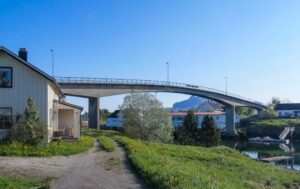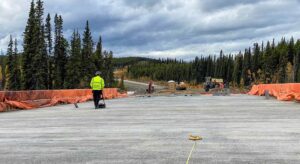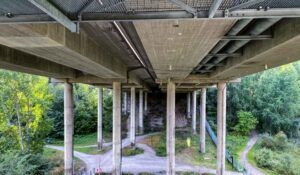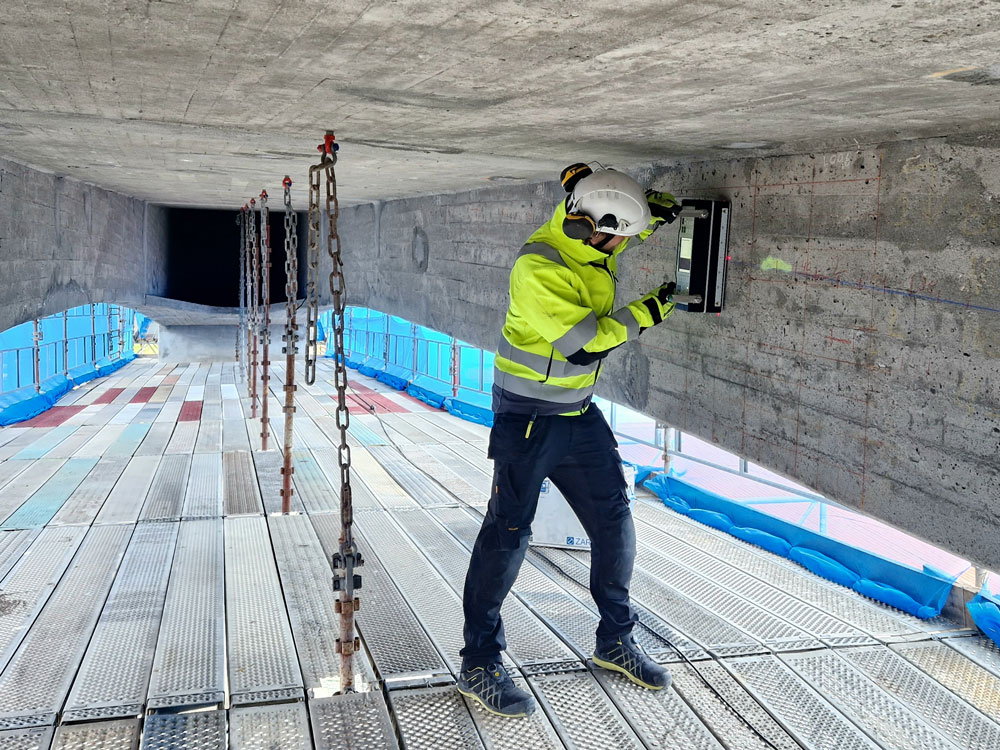Problem statement
One of our strongest areas is calculation and modeling. Often we do calculations and/or modeling before a condition assessment or measurement and almost always in connection with repairs and strengthening of structures.
Our knowledge is based on long experience and many different types of applications. We perform both analytical and numerical calculations.
We have compiled design manuals for the reinforcement of concrete structures with composite materials and for the use of fiber-reinforced composites as internal reinforcement in concrete structures.
A typical example of an assignment is to check the load-bearing capacity of existing buildings and structures. One particular assignment was to investigate the load-bearing capacity of a mast foundation with a mast about 240 m high. It was found that the load-bearing capacity, due to cracking of the concrete as a result of alkaline reactions, followed by water penetration and repeated freezing cycles continuing to break down the concrete, was insufficient.
Outcome
Through modeling and condition assessment, we were able to map the load-bearing capacity and also propose measures for action. In this case, it was enough to grout cracks and ensure that the water could drain off the foundation. The bearing capacity was sufficient for the load cases examined.
Solution
First, condition assessment was carried out according to Level 1 and Level 2. Then, we compiled a linear FE model for overall control of stresses and loads. The next step was to model cracks and defects and apply loads from the mast. This was done with non-linear modeling. ASR impact was modeled through the real cracks that existed. We did not model what could possibly happen over time if ASR together with frost degradation would continue over time.
The modeling results showed that the bearing capacity was sufficient. However, to prevent further degradation, cracks were grouted and a waterproofing layer was applied to the surface.
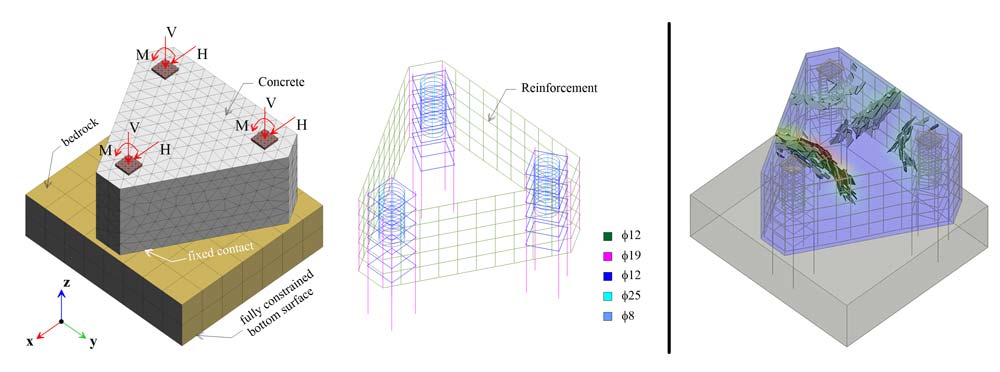
Commentary
Although this site is relatively small, the modeling was quite extensive, especially when taking into account existing cracks and damage. We could have spent more time on the evaluation, but agreed with the client that the results we had obtained were sufficient to resolve the uncertainty regarding the bearing capacity and risk of collapse.
